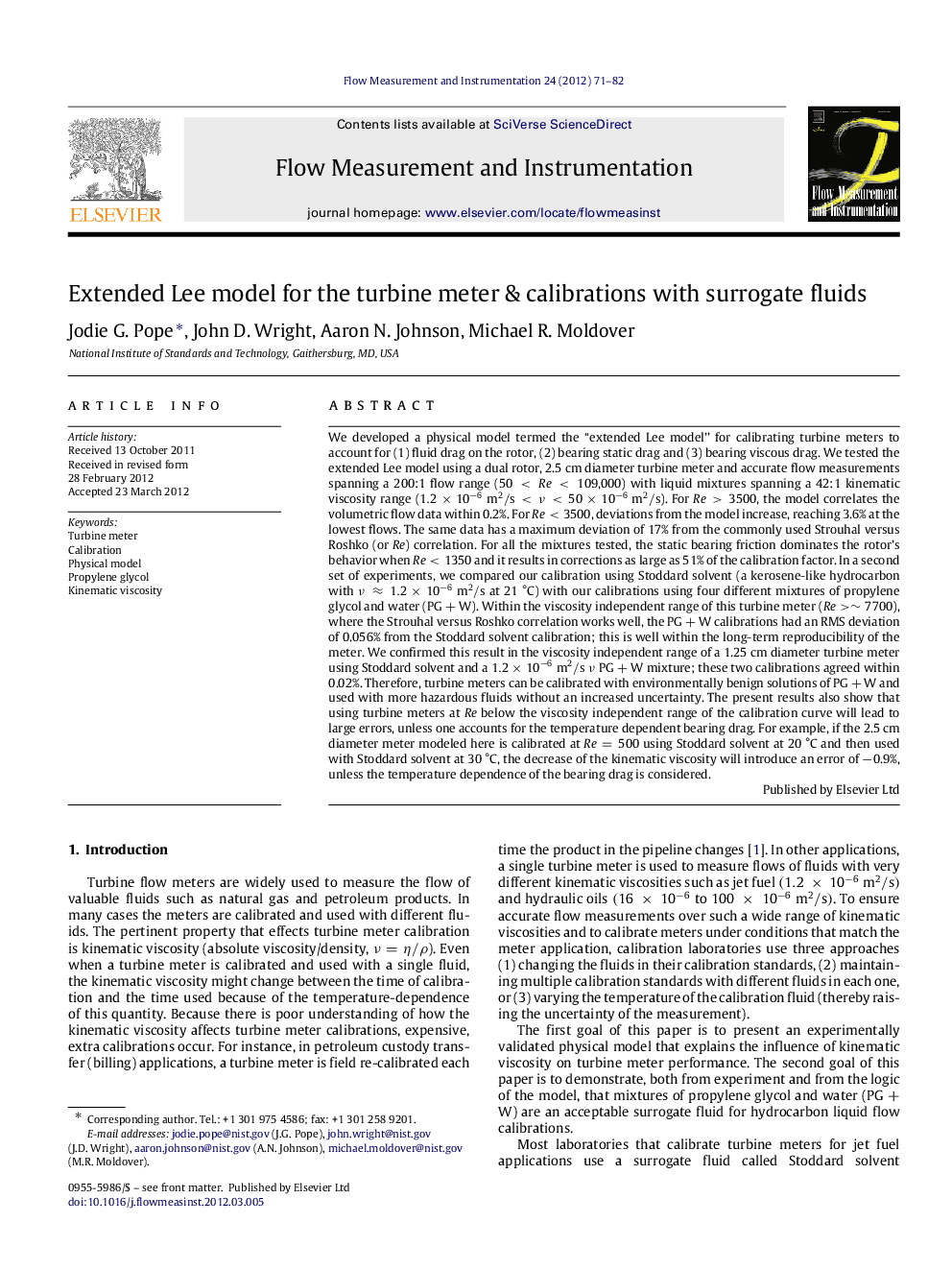| کد مقاله | کد نشریه | سال انتشار | مقاله انگلیسی | نسخه تمام متن |
|---|---|---|---|---|
| 708591 | 1461113 | 2012 | 12 صفحه PDF | دانلود رایگان |

We developed a physical model termed the “extended Lee model” for calibrating turbine meters to account for (1) fluid drag on the rotor, (2) bearing static drag and (3) bearing viscous drag. We tested the extended Lee model using a dual rotor, 2.5 cm diameter turbine meter and accurate flow measurements spanning a 200:1 flow range (50
► We model the physics of turbine meter performance.
► We tested replacing hazardous liquids for meter calibrations.
► Our model explains the turbine meter calibration curve.
► Environment friendly mixtures can replace hazardous fuels in meter calibrations.
Journal: Flow Measurement and Instrumentation - Volume 24, April 2012, Pages 71–82